Petrila Mine – from the pearl of coal mining to an entire Planet
The strong momentum of civil society is transforming this Romanian mine into a new space where cultural events are already being organized
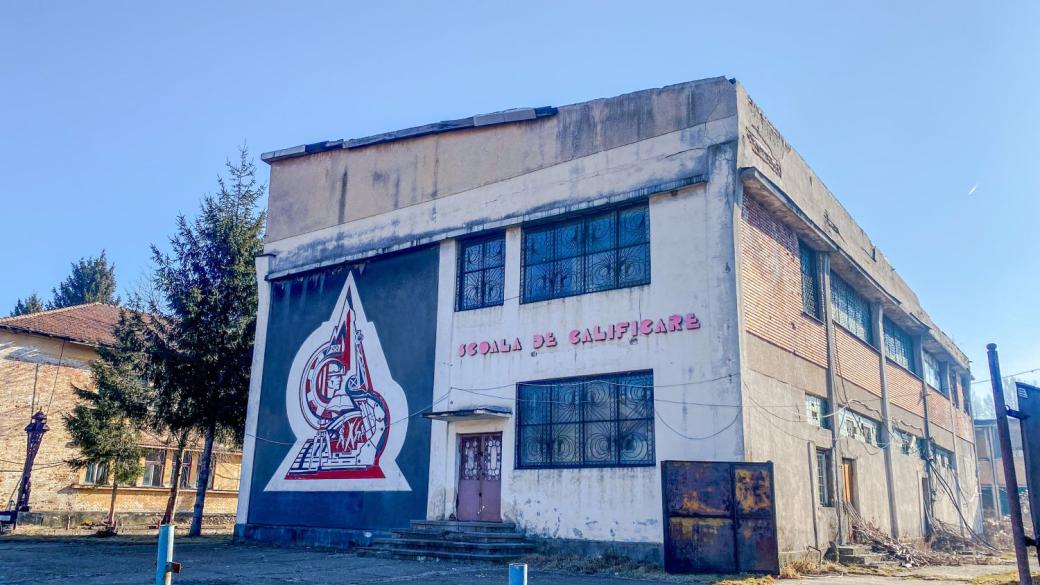
© ECONOMIC.BG / Economic.bg
The pearl of Romanian industry – this is what the Petrila mine looked like more than half a century ago. Opened in 1859 during the Austro-Hungarian Empire, it is the largest coal mine in Romania and one of the deepest in Europe (its main shaft is 940 m deep).
It is part of a remote cluster of six mining towns and surrounding villages in the Jiu Valley of the Carpathian Mountains, which still holds a special place in the history of coal mining in Central and Eastern Europe.
Coal mining in the valley dates back 150 years, but the industry flourished during the communist dictatorship of Nicolae Ceausescu when more than 100,000 Romanians flocked to the mines from poorer parts of the country in the second wave of industrialization.
To give a better idea of the sector's scale, in 1990, almost one million people worked in the Romanian mining sector and related industries.
The Petrila Mine continuously increased its production until 1983, when it peaked at 1.2 million tons. In that year, 4,500 people worked there.
In 1997, less than a decade after Ceausescu's execution and the fall of communism, a restructuring program led to the closure of some of the region's mines, with the loss of 90% of jobs and 40% of the population. Only two mines remain active today, employing just 2,000 people. They are also scheduled to close.
Blood for coal
Working conditions in the mines were precarious, accidents were frequent, and environmental damage was extensive. The coal in Petrila was mined in a very non-mechanized manner and could only be sorted by hand during daylight hours.
In 2008, the Petrila mine was rocked by two powerful explosions, marking November 15 as the darkest day in the city's history. On Saturday, November 15, 2008, at around 3:00 p.m., an explosion in a mine gallery, following an excessive buildup of methane, killed eight people. Eight mine rescuers who were underground at the time also suffered serious burns as a result of the explosion. Four hours later, another explosion claimed the lives of five more miners and rescuers. Both explosions were caused by the buildup of toxic gases.
The accident changed the lives of dozens of families fundamentally - 13 miners, including rescuers, lost their lives underground that day, and 15 were injured. The echo of the explosion still reverberates in the town of Petrila, and every year on this date the community honors the heroes and their rescuers.
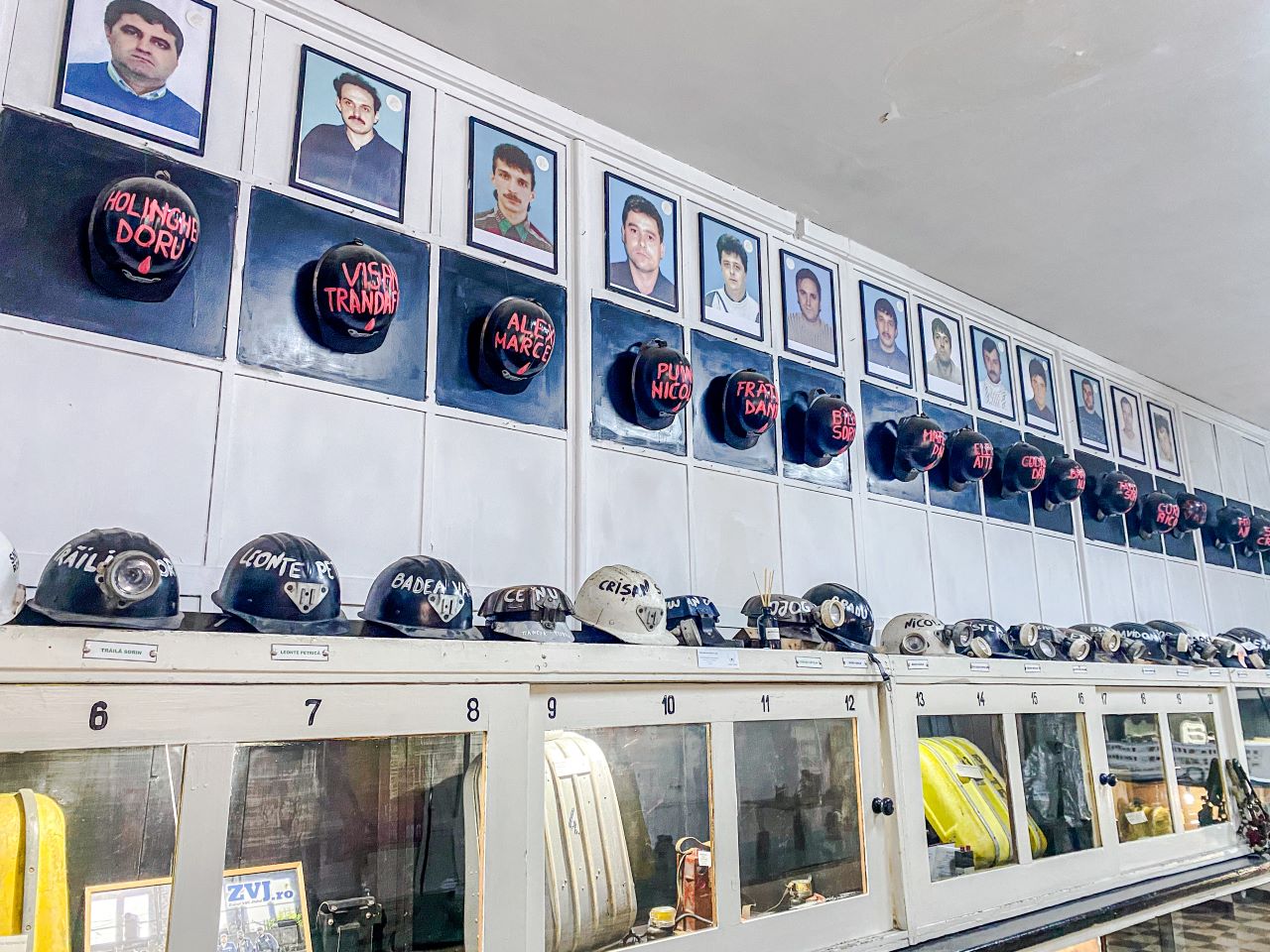
The museum of miners and rescuers at Petrila mine
This marked a turning point for the future of the mine - without solutions for its safe operation, it was included in the restructuring program. Production gradually decreased until 2013, when the mine was announced to be closed. The last ton of coal was extracted in October 2015, and the plan was to completely demolish the facilities.
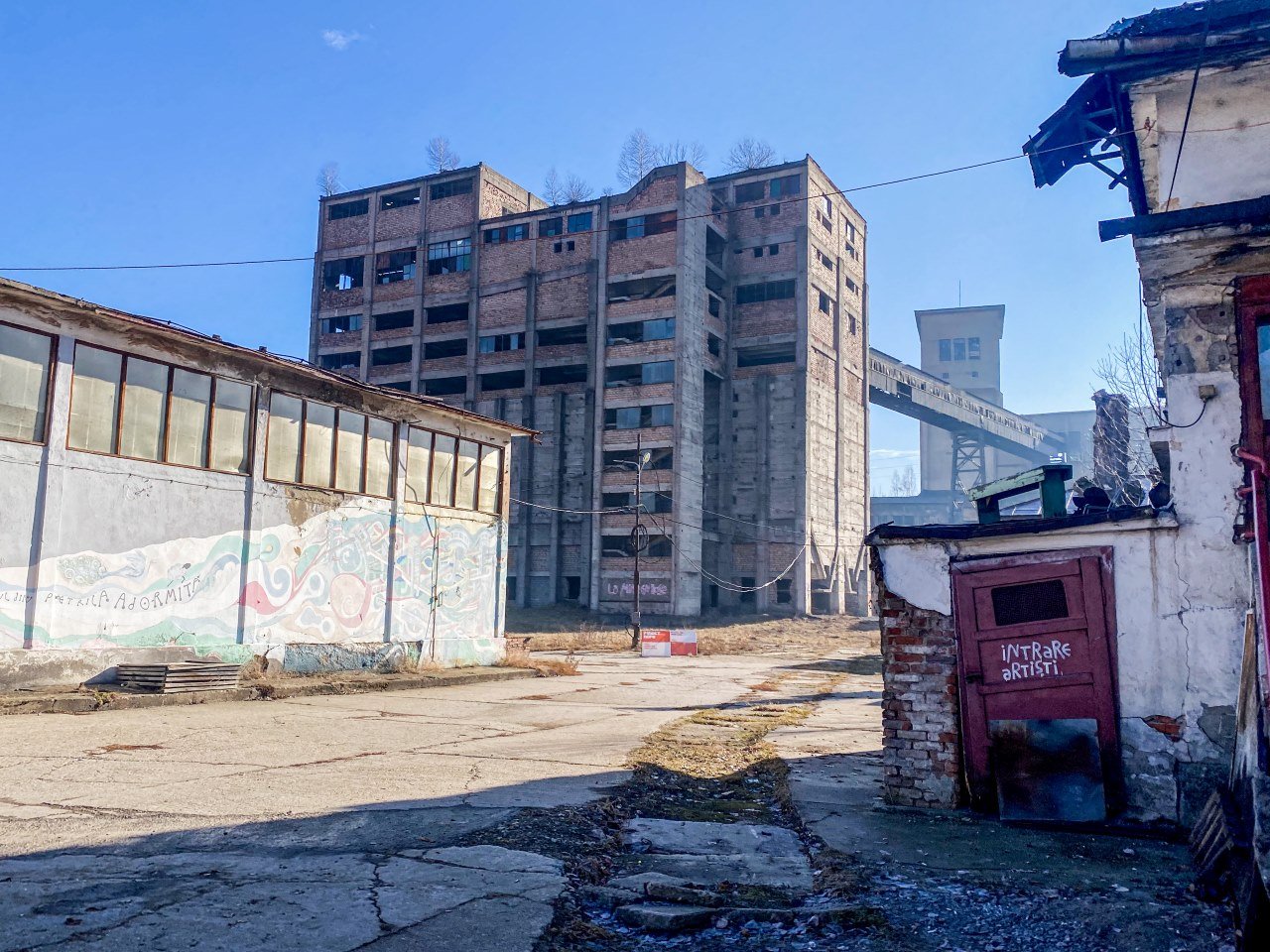
With the closure of the mines in the 1980s, a great out-migration began from the Jiu Valley. There is a corner on the ground containing painted stones marked with the names of those who had emigrated and where they are now. You can see locations in neighboring countries, including Bulgaria, throughout Europe, and as far afield as Australia, Canada, or Russia.
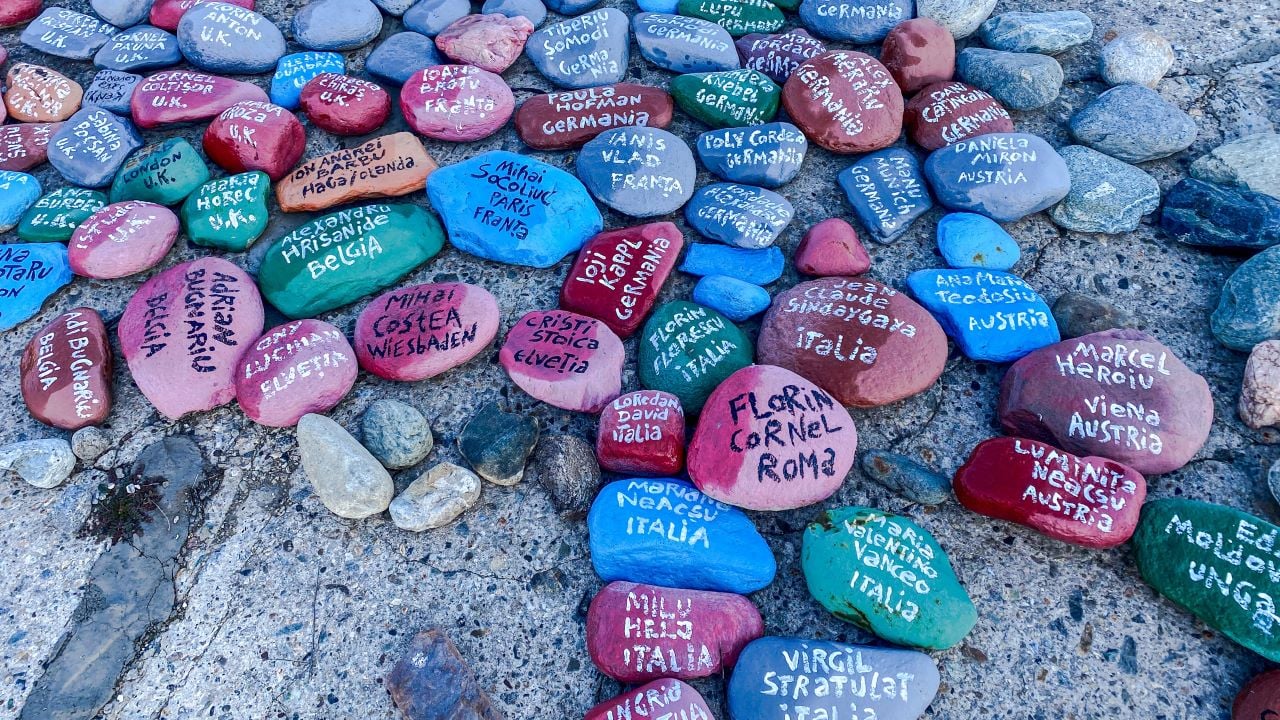
In 2018, on November 15, a unique museum was opened at Petrila mine in memory of all the rescuers in the Jiu Valley who lost their lives while trying to save their coworkers. It was built with the personal funds of one of the miners, who worked for many years in the gallery, which collapsed meters away from him as he witnessed the death of his colleagues. Now, Catalin Cenusa spends even more time in the mine than before. Serving as an overseer of the grounds, he warmly welcomes visitors, tells stories and takes care of the buildings and the yard.
There is no coal like our coal and there is no place like Petrila. Let's preserve it and do something," says Catalin.
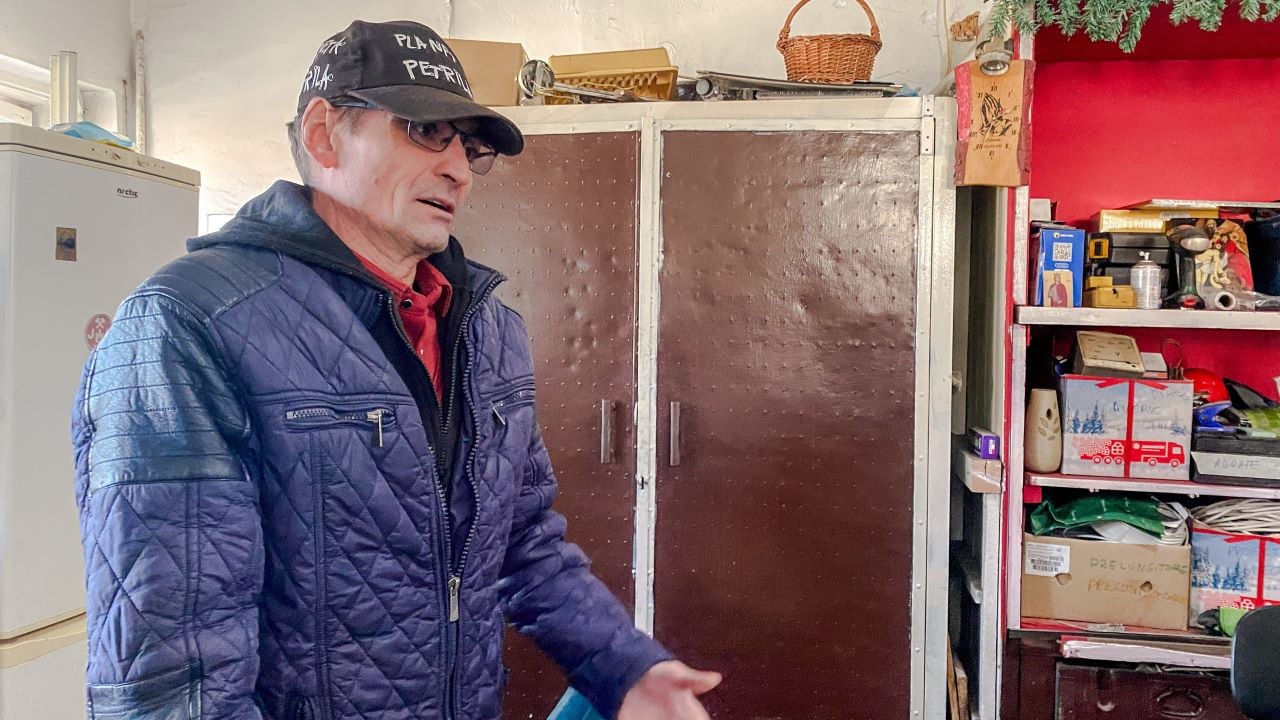
Catalin Cenusa in his office
If you are lucky enough to meet him there, he will greet you with a typical miner's greeting and invite you to his "office". There he will treat you to a sip of apple brandy and share stories about the years spent underground and above ground - about the difficult moments, but also about the future, which Catalin today expects with a smile and trepidation because Petrila mine is his world and his Planet, which he tirelessly takes care of.
From a Mine to a Planet
The locals believe that the Jiu Valley has great potential – that is why civil society is actively developing there and it is starting to yield results. Back in 2011, after learning about the fate of mine, a local artist, a team of architects and citizens initiated a series of projects offering alternatives to its demolition. Born in Petrila – Ion Barbu, an artist and political cartoonist, is among the enthusiasts who have a different vision for the future of abandoned buildings – reviving them through art and culture.
A group of young people from the Valley, some of whom had worked and studied elsewhere, decided to return to their hometowns in the region, where they created a strong civil society and became part of an initiative called Planeta Petrila. The team convinced the Petrila municipality to purchase the mine facilities, and their struggle to preserve history was chronicled in a 2015 documentary by Andrei Dascalescu called “Planeta Petrila,” which brought the case to national attention. Barbu and his colleagues then officially founded their own NGO, which they named after the title of the documentary.
The “Recovery through Cultural Initiatives Program” at Petrila Mine was launched at the end of 2017 as a coordinated action plan, the ultimate goal of which is to create a new administrative, economic and cultural infrastructure of Petrila together with an engaged local community. The aim of Planeta Petrila is to bring together artists, experts, government officials and the general public in a multidisciplinary project to rethink the entire site.
Adina Vintan is the founder of the Valea Jiului Society, a non-governmental association focused on local development in the Jiu Valley. The organization was among the drivers of the rescue of the Petrila mine.
Together with volunteers, we started to revitalize and regenerate step by step different spaces in the Petrila mine," commented Adina.
She says that resources are being collected from various financial instruments and funds for the implementation of the project. Specifically, the Planeta Petrila project is co-financed by Horizon 2020 - the European Union's multi-annual program for scientific research and innovation.
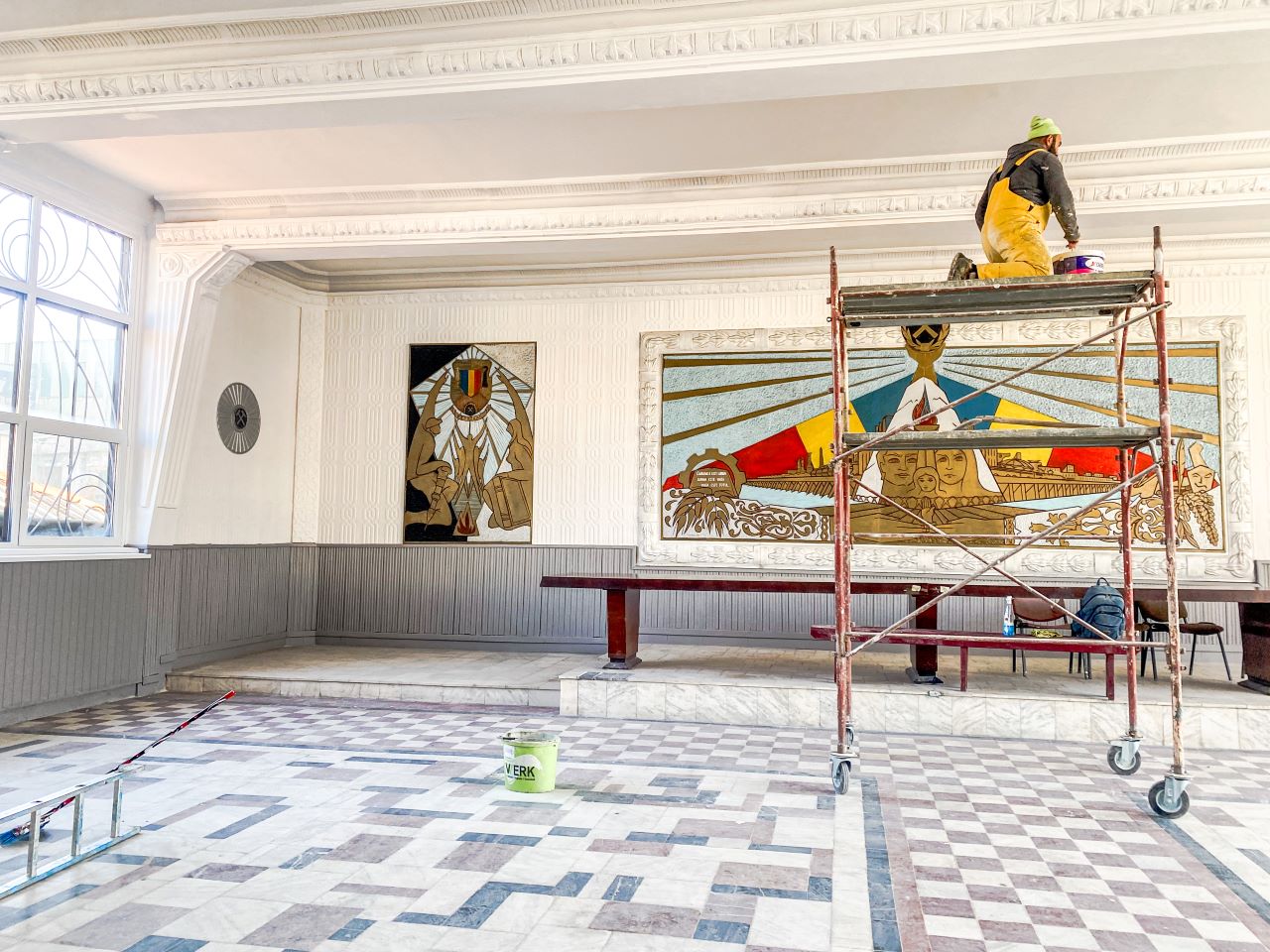
Renovation of some of the administrative buildings is currently underway
All this civil society momentum is slowly transforming the mine into a new space, where cultural events such as concerts, exhibitions and meetings are already being organized, and this maintains public interest in the fate of Petrila. The plan is to implement a total of 18 projects in the complex, including a restaurant in the mine tower, a robotics center, and an events building, among others. Within the framework of Planeta Petrila, two robotics events have already been organized. The National Opera of Cluj-Napoca also organizes performances there; plus, there have been dozens of exhibitions, theater performances, etc.
The steps described highlight only the first stages of a broad transformation process that is gradually building and influencing the future of the entire community. The fact that the Petrila mine is becoming a new urban center represents a chance for a change in the general discourse, from resignation to optimism and from fatalism to attachment to the common values that shaped the Petrila community in the sunset of the mining industry.
Planeta Petrila is a big project full of hopes, and the locals have put their hearts into it, with the belief that there can be a bright future for an old dusty mine.
Co-Funded by the European Union. Views and opinions expressed are however those of the author(s) only and do not necessarily reflect those of the European Union or the Managing Authority. Neither the European Union nor the Managing Authority can be held responsible for them.
Translated by Tzvetozar Vincent Iolov


 Aleksandra Sotirova-Delcheva
Aleksandra Sotirova-Delcheva